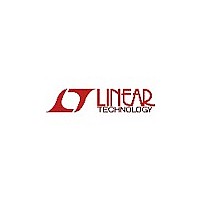LTC3412A Linear Technology, LTC3412A Datasheet - Page 11

LTC3412A
Manufacturer Part Number
LTC3412A
Description
3A/ 4MHz/ Monolithic Synchronous Step-Down Regulator
Manufacturer
Linear Technology
Datasheet
1.LTC3412A.pdf
(20 pages)
Available stocks
Company
Part Number
Manufacturer
Quantity
Price
Part Number:
LTC3412AEFE
Manufacturer:
LINEAR/凌特
Quantity:
20 000
Company:
Part Number:
LTC3412AEFE#PBF
Manufacturer:
LT
Quantity:
2 100
Company:
Part Number:
LTC3412AEFE#PBF
Manufacturer:
LINEAR21
Quantity:
2 056
Part Number:
LTC3412AEFE#PBF
Manufacturer:
LT/凌特
Quantity:
20 000
Company:
Part Number:
LTC3412AEFE#TRPBF
Manufacturer:
LT
Quantity:
2 100
Company:
Part Number:
LTC3412AEFE#TRPBF
Manufacturer:
LT
Quantity:
22
Company:
Part Number:
LTC3412AEUF
Manufacturer:
LT
Quantity:
10 000
Part Number:
LTC3412AEUF
Manufacturer:
LINEAR/凌特
Quantity:
20 000
Part Number:
LTC3412AEUF#PBFG
Manufacturer:
LT/凌特
Quantity:
20 000
Part Number:
LTC3412AEUF#TRPBF
Manufacturer:
LT/凌特
Quantity:
20 000
APPLICATIO S I FOR ATIO
Ferrite designs have very low core losses and are pre-
ferred at high switching frequencies, so design goals can
concentrate on copper loss and preventing saturation.
Ferrite core material saturates “hard,” which means that
inductance collapses abruptly when the peak design current
is exceeded. This results in an abrupt increase in inductor
ripple current and consequent output voltage ripple. Do
not allow the core to saturate!
Different core materials and shapes will change the size/cur-
rent and price/current relationship of an inductor. Toroid
or shielded pot cores in ferrite or permalloy materials are
small and don’t radiate much energy, but generally cost
more than powdered iron core inductors with similar
characteristics. The choice of which style inductor to use
mainly depends on the price verus size requirements and
any radiated fi eld/EMI requirements. New designs for
surface mount inductors are available from Coiltronics,
Coilcraft, Toko, and Sumida.
C
The input capacitance, C
wave current at the source of the top MOSFET. To prevent
large voltage transients from occurring, a low ESR input
capacitor sized for the maximum RMS current should be
used. The maximum RMS current is given by:
This formula has a maximum at V
I
monly used for design because even signifi cant deviations
do not offer much relief. Note that ripple current ratings
from capacitor manufacturers are often based on only
2000 hours of life which makes it advisable to further
derate the capacitor, or choose a capacitor rated at a higher
temperature than required. Several capacitors may also
be paralleled to meet size or height requirements in the
design. For low input voltage applications, suffi cient bulk
input capacitance is needed to minimize transient effects
during output load changes.
The selection of C
resistance (ESR) that is required to minimize voltage ripple
and load step transients as well as the amount of bulk
RMS
IN
I
RMS
and C
= I
=I
OUT/2
OUT
OUT(MAX)
. This simple worst-case condition is com-
Selection
OUT
U
V
V
is determined by the effective series
OUT
IN
IN
, is needed to fi lter the trapezoidal
U
V
V
OUT
IN
– 1
W
IN
= 2V
OUT
U
, where
capacitance that is necessary to ensure that the control
loop is stable. Loop stability can be checked by viewing
the load transient response as described in a later section.
The output ripple, ΔV
The output ripple is highest at maximum input voltage
since ΔI
placed in parallel may be needed to meet the ESR and
RMS current handling requirements. Dry tantalum, special
polymer, aluminum electrolytic, and ceramic capacitors are
all available in surface mount packages. Special polymer
capacitors offer very low ESR but have lower capacitance
density than other types. Tantalum capacitors have the
highest capacitance density but it is important to only
use types that have been surge tested for use in switching
power supplies. Aluminum electrolytic capacitors have
signifi cantly higher ESR, but can be used in cost-sensitive
applications provided that consideration is given to ripple
current ratings and long term reliability. Ceramic capacitors
have excellent low ESR characteristics but can have a high
voltage coeffi cient and audible piezoelectric effects. The
high Q of ceramic capacitors with trace inductance can
also lead to signifi cant ringing.
Using Ceramic Input and Output Capacitors
Higher values, lower cost ceramic capacitors are now
becoming available in smaller case sizes. Their high ripple
current, high voltage rating and low ESR make them ideal
for switching regulator applications. However, care must
be taken when these capacitors are used at the input and
output. When a ceramic capacitor is used at the input and
the power is supplied by a wall adapter through long wires,
a load step at the output can induce ringing at the input,
V
mistaken as loop instability. At worst, a sudden inrush
of current through the long wires can potentially cause a
voltage spike at V
When choosing the input and output ceramic capacitors,
choose the X5R or X7R dielectric formulations. These
dielectrics have the best temperature and voltage charac-
teristics of all the ceramics for a given value and size.
IN
. At best, this ringing can couple to the output and be
V
OUT
L
increases with input voltage. Multiple capacitors
I
L
ESR +
IN
large enough to damage the part.
OUT
, is determined by:
8fC
1
OUT
www.DataSheet4U.com
LTC3412A
11
3412afc













